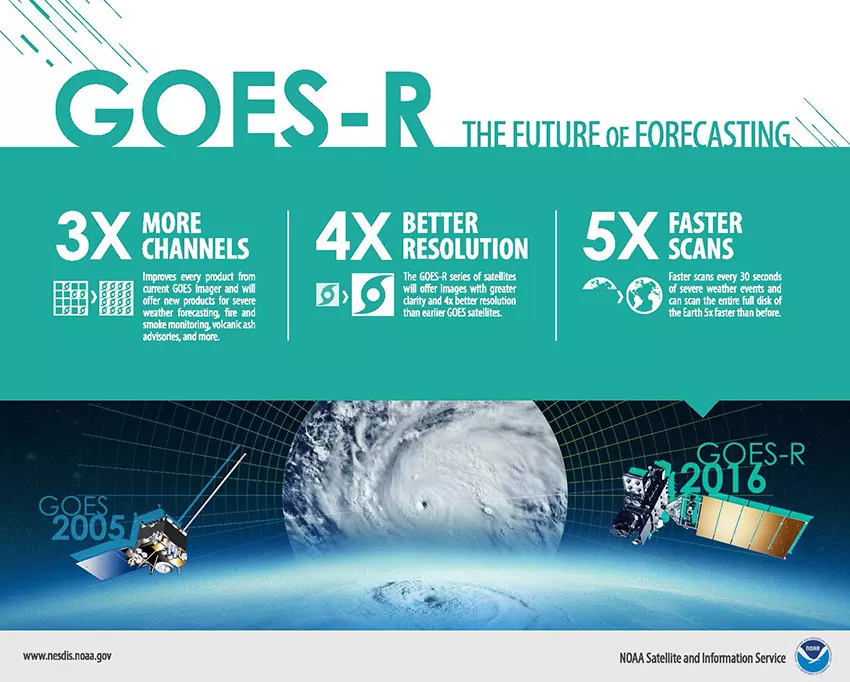The GOES-R satellite is set to launch on November 4, 2016. GOES-R, or GOES-16 as it will be known once operational, will launch on board an Atlas V 541 rocket from Cape Canaveral Air Force Station, Florida.

The GOES-R satellite is set to launch in 2016. GOES-R, or GOES-16 as it will be known once operational, will launch on board an Atlas V 541 rocket from Cape Canaveral Air Force Station, Florida.
GOES-R will be the first satellite in a series of next generation geostationary environmental satellites, which will include GOES-S, T, and U. These satellites will provide significant enhancements for weather forecasters at NOAA’s National Weather Service, giving them the ability to observe the Western Hemisphere in near real time. GOES-R will offer 3x more spectral channels, 4x better resolution, and provide 5x faster scans of the Earth over the current GOES satellites.
Getting Ready for Launch: Final Testing
The road from construction in a clean room to sitting atop a rocket in just six months is a busy one. Watch here to learn more about how GOES-R will make the journey. Lockheed Martin, the prime spacecraft developer, will complete the final testing to ensure the spacecraft is ready for shipment in the coming months.

The satellite recently completed acoustics testing, which uses high-intensity horns to subject the satellite to the extreme sound pressure that simulates the noise created when the rocket is launched. The test verified the satellite will function normally after experiencing these strong acoustic vibrations. Up next is testing to ensure that the electromagnetic signals produced by satellite components do not interfere with its operation.
In August, the satellite will fly on a U.S. Air Force C-5 Galaxy cargo jet from Colorado to Kennedy Space Center in Florida. Once in Florida, the spacecraft will undergo additional testing and preparation for encapsulation on top of the rocket that will take it to its geostationary orbit 22,000 miles above Earth.
The weather imaging capabilities of GOES-R are like going from a black and white television to HDTV -- there is a remarkable increase in resolution and refresh rate. In addition, GOES-R also carries the first lightning mapper to be flown in geostationary orbit and will provide enhanced solar imaging and space weather monitoring capabilities. GOES-R will also be part of the Search and Rescue Satellite Aided Tracking (SARSAT) system, relaying distress signals from 406 MHz emergency beacons to first responders, like the U.S. Coast Guard.Want to know more about GOES-R and why this new satellite really matters? Visit the remodeled GOES-R website.
Editor's note: Story has been updated to reflect a change in the launch date. For more information, visit www.goes-r.gov.
